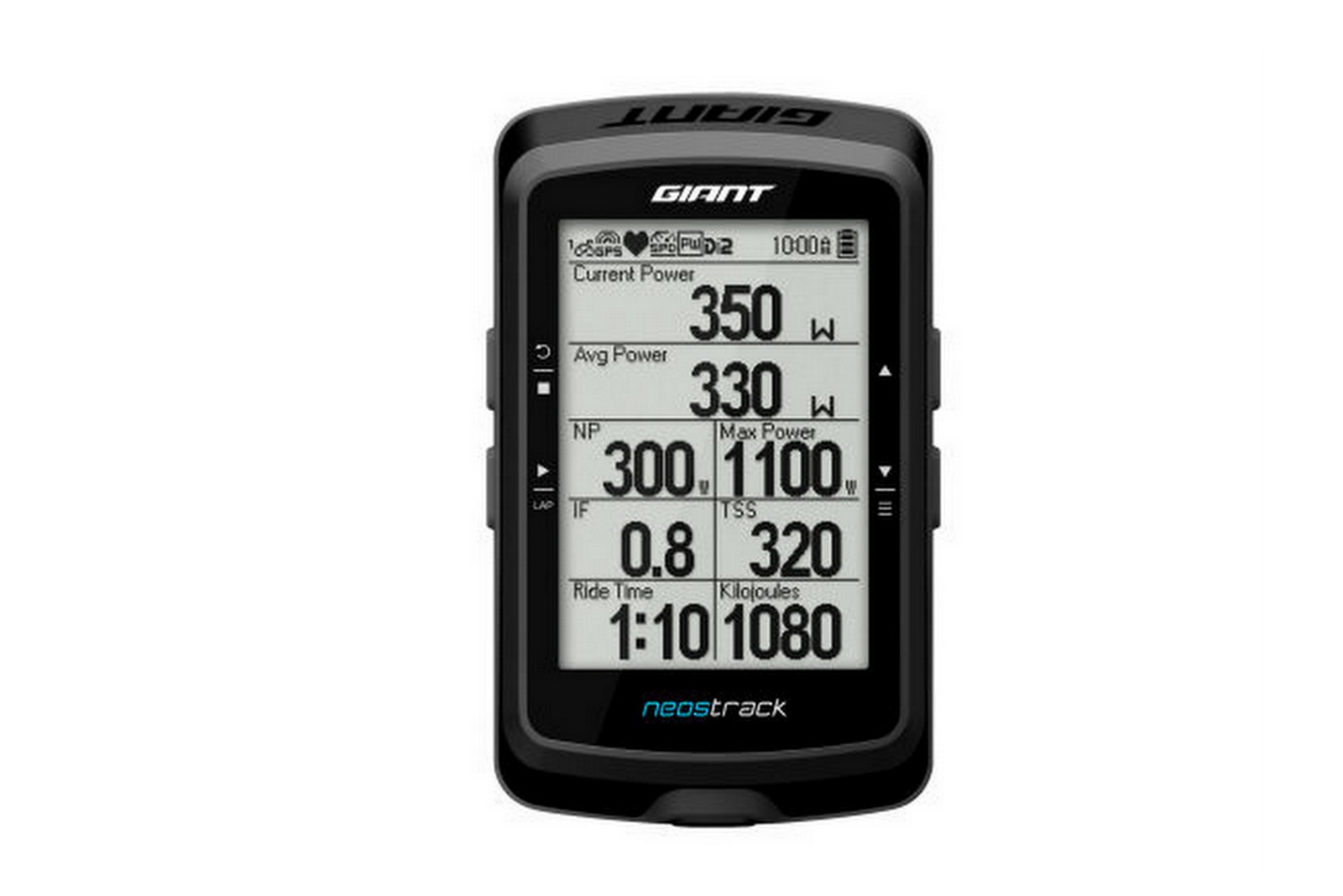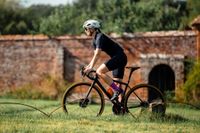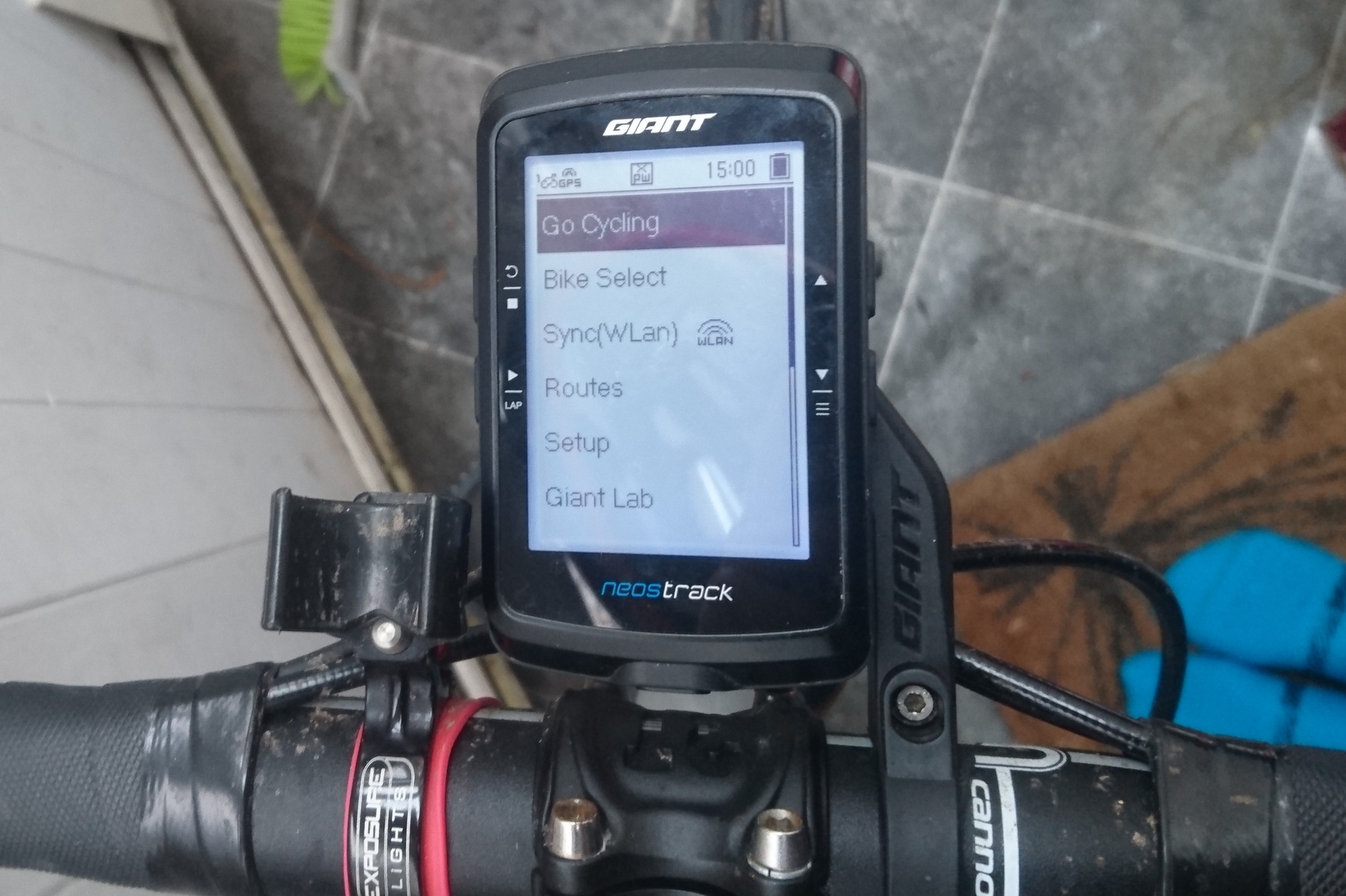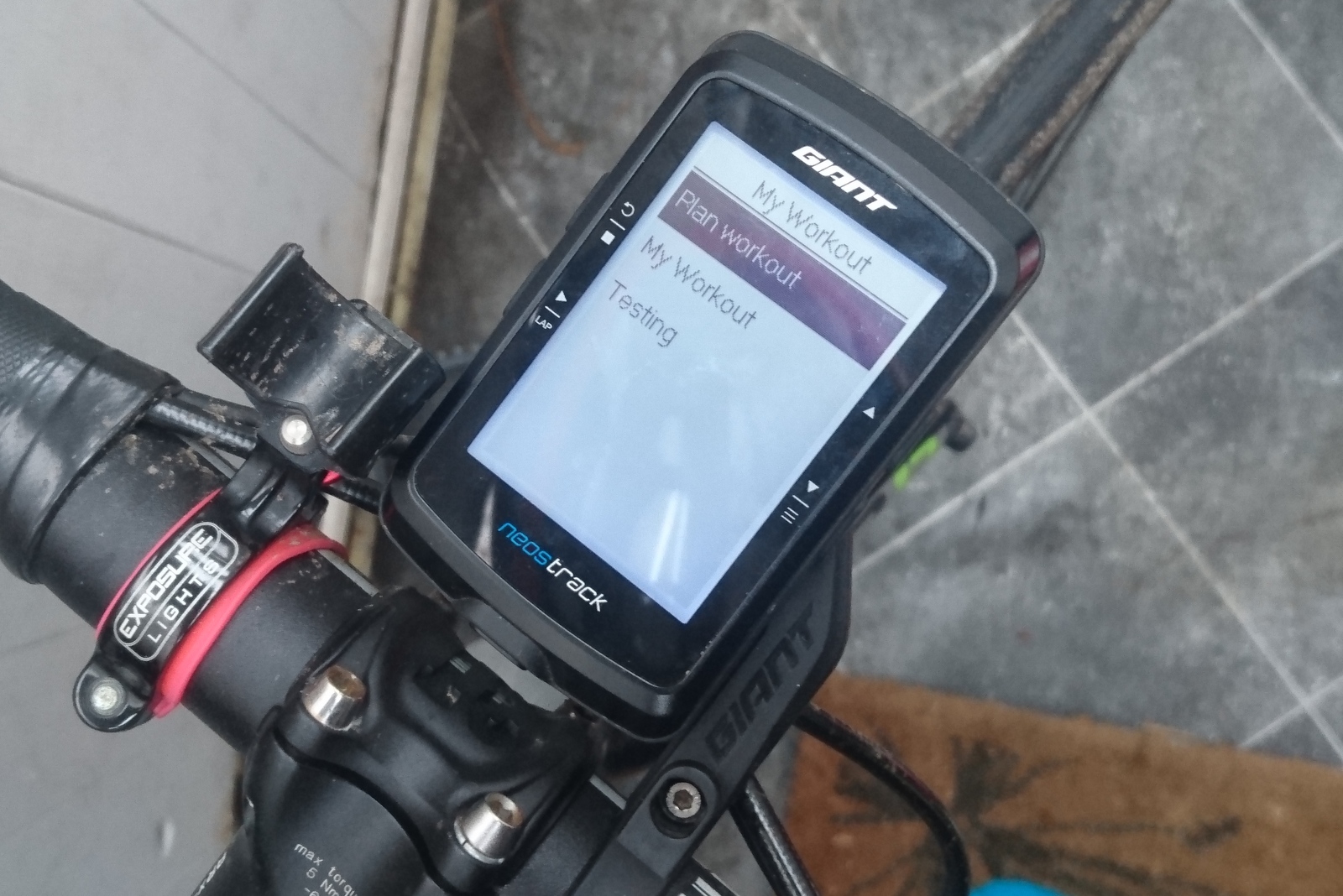Giant NeosTrack cycling computer review
Giant has taken on the cycling computer leaders with its NeosTrack, undercutting the market with a tasty RRP – but has it bitten off more than it can chew?

A cycling computer which provides all the training data a rider could need, at a value-for-money price tag. Some of the nice-to-haves, like colour screen and segment warnings, are missing – but Giant has pitched this unit more at a dedicated athlete who will find within it all that they need to perform and improve. Though the unit is light, the mount needs to be stronger and the system and associated app could do with some work to improve ease of use.
-
+
Value for money
-
+
Focus on training
-
-
User interface takes getting used to
You can trust Cycling Weekly.

It's fair to say that if we were playing a word association game and the term was "cycling computer", Giant's name wouldn't be the first to spring to mind. The market has long been dominated by US superpower Garmin, and the industry is just about getting its head around the arrival of Wahoo.
Giant's NeosTrack was introduced last summer, first spotted aboard Team Sunweb pro bikes at the 2017 Tour Down Under, and we've been living and riding with it for well over six months – putting it through its paces (and at times having it put us through ours).
At £149.99, the NeosTrack sits well below the Garmin Edge 520, yet shares a fair few of its capabilities.
The build and features
The computer itself was designed in collaboration with Taiwanese tech creator Bryton. It features a 2.6 inch LED screen, noticeably impressive 33-hour battery life (over twice as much as Garmin 520's 15), and it weighs in at a pretty lightweight 79g.
There are five buttons: on/off on the bottom, start/lap/OK bottom left, stop/back top left, with arrows on the right. Accessing the menu is achieved by holding the down arrow.

The screen display is pretty basic being black and white with a noticeably blocky font which feels a little bit robot-esque compared to other options on the market. This said, you can display a remarkable amount of data, choosing up to six-page displays, plus altitide and mapping data, with up to 10 fields per page.
The latest race content, interviews, features, reviews and expert buying guides, direct to your inbox!
All the usual data is available – speed, distance, elevation, temperature, power, heart rate, cadence, and Di2 gearing info – some of those of course only when used with the relevant measuring devices.
Like almost all newer units, the Giant NeosTrack connects via both ANT+ and Bluetooth, meaning it can communicate with an array of training tools such as power meters and heart rate monitors as well as mobile phones and Di2 systems.
The power-focused metrics on offer are detailed, including TSS (training stress score), Normalised Power, left/right power balance and pedal smoothness.
Giant has developed its own NeosTrack app too, which lets you plan training sessions, routes, and auto upload to programmes like TrainingPeaks or Strava. The app gives you a calendar view so you can see all you've been up to in recent weeks, and there's an analysis tab which shows your performance in terms of heart rate and power zones. Set it all up properly and you can see calories burned and percentage of which was fat, too.
Interestingly, the Giant NeosTrack app just didn't like the first email address I fed it, apparently "@gmail.com" wasn't valid. I had my partner test his, which was not accepted either. In the end, we discovered that "@googlemail" worked - so it's not a broken bit of software, but "@gmail.com" is a pretty widely used address.
This rather odd bug aside, rides can be uploaded via Bluetooth; you can use WLAN to pair up to your WiFi, or go old school and use the provided micro USB which also serves as the charging mechanism.
As well as using the app to plan routes (on desktop or mobile), you can set the NeosTrack unit itself to administer breadcrumb navigation based on a ride you've done before. As with any breadcrumb nav, the mapping won't be super clear and detailed, but you do get turn-by-turn navigation and you can certainly rely on this to get you on your way.
Giant Lab
So far, the Giant NeosTrack kind of does everything that we'd expect most cycling computers to do, albeit with a pretty friendly price tag and vastly improved battery life.
Where other computer brands have gone all-in for Strava live segments and the such, Giant has stated its aims very clearly with what it calls the 'Giant Lab'.

The lab is an area dedicated to the Training Smart System, where power data is stored. Riders can fill this section out by completing pre-loaded tests: step-by-step instructions detail how to test for max heart rate, lactate threshold heart rate, FTP and MAP (max aerobic power). Repeat the tests, and the user can track progress over time.
It's also possible to plan your own training sessions, imputing the heart rate or power parameters for specific intervals. These are then stored in 'My Workouts' where they can be repeated at a later date.
Living with the Giant NeosTrack
We've established that the NeosTrack ticks off the basic needs of most cyclists, with a heavy focus on training and a lesser interest in some of the more frivolous features available elsewhere – such as Strava connectivity.
It took a little while to become accustomed to the way the NeosTrack operates. Once the unit is on, the rider is immediately presented with ride screens. This sort of epitomises the unit a little bit: it doesn't want you messing with menus – it wants you to get on with logging the hard yards.
However, since you can have several bike profiles, it'd be nice to start at the top where you could select the right one rather than flipping back to 'menu'.

The Giant NeosTrack claims to possess a 'high sensitivity GPS' and I always found it quick to connect to the satellites whilst the data appeared pretty spot on. A minor gripe was that early on, following a firmware update, the unit learned a new party trick: beeping whenever connection was lost. This happened when riding under bridges and tree cover and seemed a bit overzealous to me.
When it comes time to stop a ride, you'll be presented with the abrupt question "do you want to stop?", whereby you can scroll between "yes" and "no" before hitting "OK" (bottom right) on the appropriate selection. There's nothing strictly wrong with this; it's just a lot of us are used to being able to press stop and start without having to confirm the choice.
This little critter is not touchscreen and it wouldn't be fair to expect that at this price point. However, the buttons required a bit more pressure than I'd like to operate.
The Giant NeosTrack at first appeared a bit slow, clunky and not very user friendly. I didn't find the buttons or the system intuitive, it took me longer than I'd expect to complete actions such as locate and connect to power meters.
After further usage, I expect that might have come down to an ingrained bias that comes from being very well used to a particular brand and interface. Assuming readers are also coming from the position of not being a clean slate, it's worth being prepared for a slightly frustrating first few uses - you can expect to hit the wrong button a few times, though it'd be hard to lose a ride with the "do you want to stop?" screen barring your way to doing so quite so adamantly.
The NeosTrack comes with an out-front mount as well as bar mounts which attach via the black elastic bands we all know and love. I found the mount didn't quite live up to expected standards – it was a bit flexy, which meant the unit tipped slightly to the side, and it also managed to work itself onto the narrow part of the bar on one occasion, free to flip over the handlebar. Admittedly this was on a mountain bike ride when (attempting to) slay the trails in Morzine so not your average intended use for a roadie.
Value
Some cycling computers on the market carry pretty jaw-dropping prices. At £149.99, Giant has undercut most of them, while still offering the features riders need – albeit without frills.
Michelle Arthurs-Brennan the Editor of Cycling Weekly website. An NCTJ qualified traditional journalist by trade, Michelle began her career working for local newspapers. She's worked within the cycling industry since 2012, and joined the Cycling Weekly team in 2017, having previously been Editor at Total Women's Cycling. Prior to welcoming her first daughter in 2022, Michelle raced on the road, track, and in time trials, and still rides as much as she can - albeit a fair proportion indoors, for now.
Michelle is on maternity leave from April 2025 until spring 2026.
